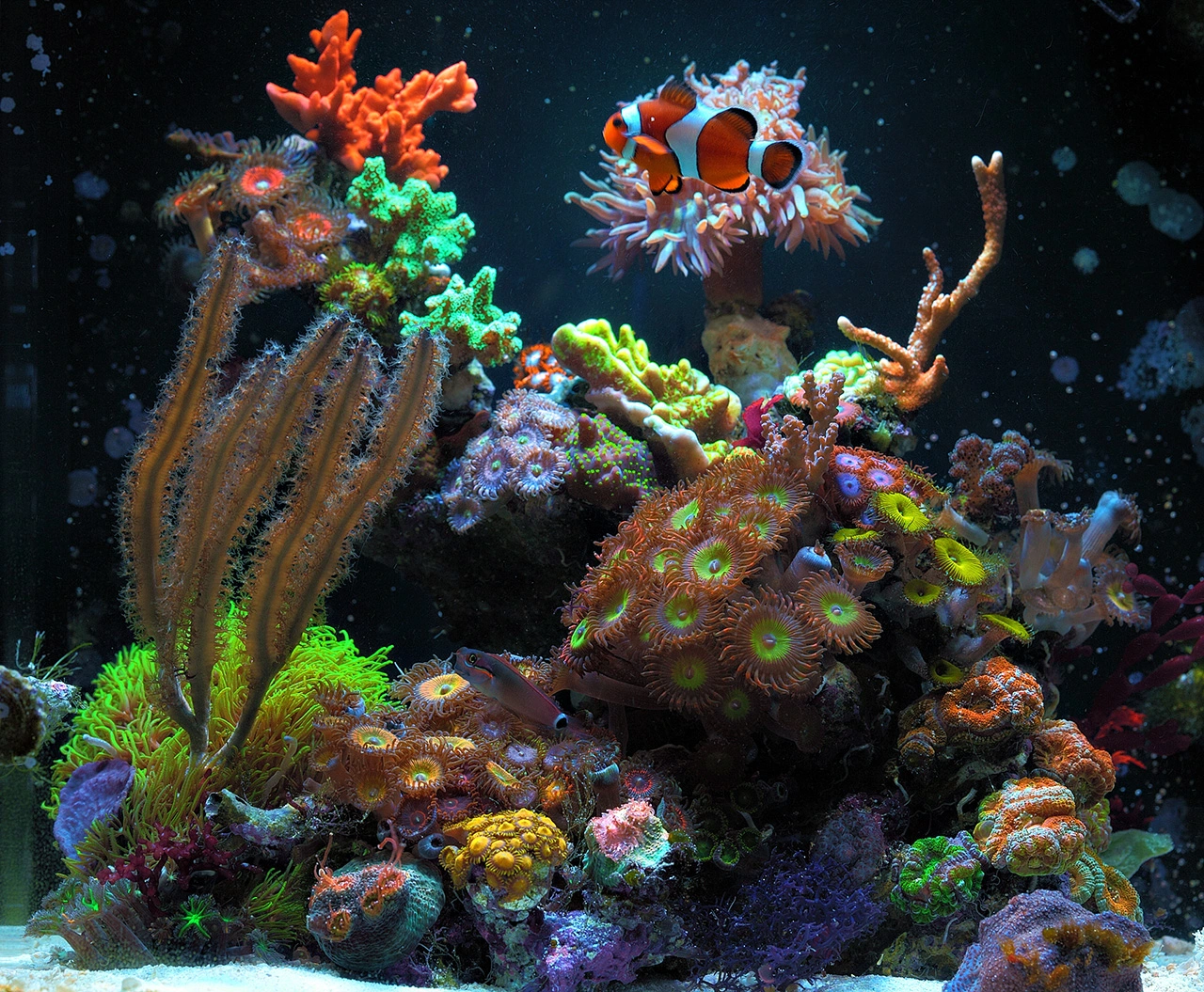Stunning 8-Gallon Reef Tank – Polarcollision's TOTM | NanoReef

Tank Specifications
Volume: 8 Gallons / 30 Liters
Dimensions (L × W × H):
12.0" ×
12.0" ×
12.0"
30.5cm ×
30.5cm ×
30.5cm
Equipment List
- Salt: Instant Ocean
Frequently Asked Questions
How do I manage water changes in my reef tank?
For a reef tank, it's generally recommended to perform 10-30% water changes bi-weekly or monthly, depending on your tank's bioload. In the case of Polarcollision's 8-gallon tank, she performs 30% water changes every two weeks. Make sure to use salt mix water (like Reef Crystals or Red Sea Pro) that matches your tank's salinity levels (around 1.025) to avoid shocking the corals and fish.
What is the best way to maintain stable water parameters?
Maintaining stable water parameters can be achieved through consistent monitoring and regular maintenance routines. For instance, Polarcollision maintains her parameters by using a combination of automatic top-off (ATO) systems to manage salinity, dosing pumps for calcium and alkalinity, and periodic water changes. Regularly test for salinity, pH, calcium, magnesium, alkalinity, nitrate, and phosphate levels to ensure they stay within desirable ranges.
How often should filter media be changed and what types are recommended?
Filter media should be changed as follows: filter floss should be changed every week to keep it effective, while activated carbon and Purigen can be replaced once a month. It's also crucial to rinse the filter media in tank water to preserve beneficial bacteria.
What are the benefits of dosing pumps for coral and fish care?
Dosing pumps allow for consistent feeding and dosing of essential nutrients. In Polarcollision's setup, using dosing pumps for two-part calcium and alkalinity helps maintain stable levels, which are crucial for coral health. This automation also helps maintain salinity levels through an ATO, enabling longer vacations without risking tank health.
How should I feed my corals and fish in a reef tank?
Feeding is an essential part of maintaining coral and fish health. Polarcollision feeds her fish daily and provides her corals with heavier feedings 1-2 times a week. A recommended mix for coral feeding can include blended mysis shrimp, spirulina, scallop, clam, and oysters. Additionally, consider using coral-specific additives like CoralAmino for extra nutrition.
How can I control algae growth in my reef tank?
Controlling algae can be achieved through balanced feeding and regular maintenance. Overfeeding can lead to excess nutrients, promoting algae growth. As Polarcollision learned, it's important to feed corals sufficiently without letting nutrients spike — maintain nitrate and phosphate levels. Employing macroalgae in your tank can also help absorb excess nutrients. Peroxide can be used in small doses for algae control.
What types of lighting are suitable for a nano reef aquarium?
For nano reef aquariums, LED lights are often a preferred choice due to their low heat output and energy efficiency. Polarcollision uses the Aqua Illumination Nano Sol, but she has also explored options like the Maxspect Razor. When selecting lighting, ensure it can accommodate the specific needs of your corals and adjust intensity levels gradually to prevent stress.
What filtration system is recommended for a small reef tank?
For a nano reef, an all-in-one filtration system like the InTank media basket can effectively house filter floss, activated carbon, and Purigen. This setup allows for mechanical and chemical filtration while maintaining a compact footprint suitable for smaller tanks.
What types of corals can be kept in an 8-gallon nano reef aquarium?
In an 8-gallon nano reef, you can keep various corals, including soft corals like Zoanthids and Mushrooms, LPS corals such as Chalice and Acanthastrea, and SPS corals like Montipora and Acropora. It's crucial to research the light and flow requirements of each type and position them appropriately in the aquarium.
How do I ensure my fish and invertebrates coexist peacefully?
To promote peace among different species, carefully choose compatible fish and invertebrates that share similar water parameters and dietary needs. It’s important to research the behaviors of the specific species you wish to keep, ensuring they have enough space to establish territories. Regular monitoring can help identify any aggressive behavior early on.